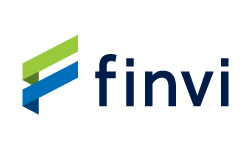Source: site
Executive Summary
- In the last five years banks and credit unions have watched over $3 trillion in deposits leave for fintechs offering savings and investment services, according to research by Cornerstone Advisors.
- To slow or reverse that trend, traditional banks and credit unions need to shake off stale product design and conventional ideas about primacy.
- One solution that could especially appeal to “Zillennials” — a checking account directly linked to the ability to make investments seamlessly.
For years, Ron Shevlin has been calling consumer checking accounts “payment motels” — short-term places for retail customers to park their funds before moving money to other destinations. But even that dismissive label doesn’t quite do justice to the deposit trends that the analyst’s recent research has uncovered.
He argues over $3 trillion has been checked out of the payment motels, apparently permanently.
In the last five years, $2.15 trillion has flowed from megabanks, regional banks and community financial institutions into fintech investment accounts like Acorns and Robinhood. Furthermore, over the same period these institutions have lost $1.05 trillion to fintech savings accounts.
Shevlin, managing director and chief research officer at Cornerstone Advisors, based these numbers, shown in more detail in the two tables below, on projections made from a survey of more than 2,700 American adults with a smartphone and at least one checking account. (The full Cornerstone study, “Stemming the Deposit Outflow: The $2 Trillion Investing Opportunity for Banks and Credit Union,” can be found here.)
It’s not just a matter of consumers chasing return, because traditional players have raised their rates when necessary, according to Shevlin.
Deposit outflow to fintech investment accounts by type of financial institution and generation ($ in billions)
|
Type
|
Gen Z
|
Millennial
|
Gen X
|
Boomer
|
TOTAL
|
|---|---|---|---|---|---|
| Megabanks | $276.6 | $544.0 | $245.1 | $215.8 | $1,281.6 |
| Regional banks | $172.7 | $272.6 | $179.1 | $188.2 | $812.6 |
| Community Fls | $10.8 | $10.3 | $16.2 | $22.9 | $60.2 |
| TOTAL DEPOSIT OUTFLOW | $460.1 | $826.9 | $440.4 | $426.9 | $2,154.4 |
Source: Cornerstone Advisors
The classic idea of primacy is evolving, and how it is evolving defies past definitions.
“The data paints a less-direct relationship between direct deposit and primary account status,” Shevlin says in a separate report, “Billions Lost: The Cost of Bankers’ Myths About Americans’ Finances.”
Deposit outflow to fintech savings accounts by type of financial institution and generation ($ in billions)
|
Type
|
Gen Z
|
Millennial
|
Gen X
|
Boomer
|
TOTAL
|
|---|---|---|---|---|---|
| Megabanks | $112.6 | $252.7 | $152.5 | $78.3 | $596.2 |
| Regional banks | $70.3 | $126.7 | $111.5 | $68.3 | $376.7 |
| Community Fls | $11.2 | $11.0 | $28.8 | $23.6 | $74.6 |
| TOTAL DEPOSIT OUTFLOW | $194.1 | $390.4 | $292.8 | $170.2 | $1,047.5 |
Source: Cornerstone Advisors
How so? First, many people maintain multiple checking account relationships, more so among Millennials and Gen Z. Shevlin also found that over half of the respondents in the latter study didn’t correlate an institution being their primary provider with it receiving their direct deposit.
In fact, the report found that many people — one in four — with multiple checking accounts actually have their direct deposit sent to an account that they don’t consider to be their primary. And that share is even higher with Gen Z — a third of them do that.
Finally — and this really tears at the classical idea of primacy and direct deposit — having the direct deposit relationship doesn’t actually pay off that much. The research found that only a slightly larger percentage of customers who have direct deposits made to an institution also obtain such services as credit cards, auto loans, personal loans, and mortgages from their “primary” provider.
“I believe that the primacy construct in consumers’ minds today is at the product or service level,” rather than at the institutional level, says Shevlin. “They have a primary checking account. They have a primary payment tool. They have a primary investment account. In fact, I think the idea of who’s your primary financial institution is a dated concept.”
Shevlin says it has become so easy to move funds around the financial services universe that consolidating all of one’s accounts in one institution “makes no sense in today’s world.”
That’s not to say that primacy at the product or service level isn’t important.
“It puts you not necessarily at the top, but in the running for a broader relationship,” Shevlin says. “But it doesn’t guarantee anything.”
But if the checking account remains an important hook, how do you hold the relationships and the money? And how do you win back some of what has already leaked out?
Shevlin has some thoughts on that too. But first it’s important to understand that younger generations — Millennials, Gen Z and the blend of the two that Shevlin sometimes likes to analyze as “Zillennials” — don’t invest like most of the Baby Boomers and Gen Xers who are making product and strategic decisions in many banks and credit unions.
Read more: Credit Unions May Have Problems Brewing Among Millennials and Generation Z




